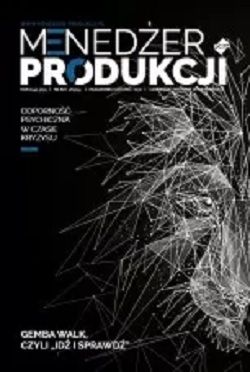
- From the practice of a production manager
- Internal trainer academy. How to take care of knowledge transfer using the potential of employees?
Every company has such expressions and abbreviations, the meaning of which can only be explained by its employees. Therefore, if you want to get to know the Arjo language better, it is worth e.g. know that medical beds are created in the PPT area, IPC is the department responsible for the production of cuffs used for the prevention of thrombosis, and lifts are devices for lifting patients. The internal nomenclature, of course, is not only used to describe the production reality. Although I could multiply similar examples from the area of administration, today I will focus on one of them. This year in Arjo, AWT, the Academy of the Internal Trainer, has become a particularly important acronym.
- How to increase production efficiency? Luxon Led case study
Are you also wondering how to increase production efficiency with the use of your resources? You have a team of professionals, you know your field, customers value your products, but the analyzes show that better results are needed. Additionally, operating during a crisis makes it the best option to optimize the available resources and thus increase efficiency, without incurring high costs. How can this be achieved?
- The subject of the issue
- GEMBA WALK for everyday use
Taiichi Ohno, called by some the father of the Toyota Production System, on which the Lean Management is based today, said: "Toyota managers should be absolutely committed to working on the production floor to wash their hands at least three times a day." It is personal presence and a go-and-see approach that form the foundation of Gemba Walk.
- The art of motivating
- Coaching in Lean, or Lean coaching
The implementation of Lean Management in an organization is a real challenge. However, the benefits it brings are well worth the effort. But is there anything that can help not only to implement, but also to maintain and develop a culture of lean thinking in an organization? Can any solutions that are not an official element of Lean effectively support this concept? Such a supplement is the use of methods offered by coaching.
- Mental resilience in times of crisis - how to deal with work and more
Living and working in a situation of uncertainty lasts longer. Currently, probably no one is able to predict when the situation will change and what consequences of the epidemic will meet us. This applies to a large extent to working life. We are slowly getting information on how employees are coping with a pandemic. Unfortunately, these are not positive data.
- Managing stress and supporting employees in stressful situations
Probably each of us intuitively feels what stress is. It is the body's reaction resulting from the difference between our abilities and the situation. Most often, it forces the body to react, actions that are to bring us back into balance. Worse, if we try to relegate these signals to the background; pretend there aren't any stressful factors. Stress then does not disappear at all. It builds up and its long-term action can have dangerous consequences.
- Welcome on board, or how to minimize the stress of a new employee using tools, processes and interactive solutions?
The onboarding process, i.e. introducing an employee to the organization, currently defines a slightly wider scope. Challenges related to employment and taking up a new job appear not only in its first days. There is more and more talk about pre-boarding, re-boarding and also off-boarding. What do these terms mean and how can you minimize employee stress using the right tools and processes?
- Development center - a tool to increase the efficiency of development processes
We recognize the effectiveness of developmental processes by how permanent is the change of behavior that was the subject of improvement. Proven ways to increase efficiency are the differentiation of working methods and the design of development processes spread over time. Increasingly, organizations invest in advanced methods, such as the Development Center, to reduce the risk of implementing inadequate solutions that generate costs, but do not bring the expected results.
- Culture of talent management, or how to create conditions in which each employee can become a talent?
How many percent of people consider themselves a talent? 86%. Imagine that 9 out of 10 employees you pass in the corridor think of themselves that they should be considered a talent by the organization. The study was conducted on 1,250 office, administrative and intellectual employees in Poland. The answer to using this potential is a unique methodology developed and implemented in over 200 organizations - from global concerns to small companies with Polish capital.
- Inspector's eye
- Absence from work due to illness. What should an employer know?
The upcoming fall-winter season will certainly increase the sickness-related absence of employees. For what reason and how long can an employee be on sick leave? What are the obligations on this account towards the employer? What rights are the employers entitled to? Does the prevailing pandemic affect the length of sick leave?
- Conflicts in the hall
- A sense of loyalty. How to induce them in employees?
A proven and loyal employee who does not look for a new job every three months and is committed to his professional activities. Holy Grail or maybe everyday life? It depends on the industry. In the world of production, there is a real multitude of specialists. From the lowest-level executive employees performing simple tasks in the hall, through technicians and engineers, to specialists in their fields and management staff. Depending on the skills, experience and demand for a given type of employee, one can talk about professions with high and low supply on the market.
Menedżer Produkcji (Production Manager) - the whole list







